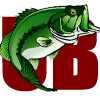Question about a small lake in Upstate SC
Started by pantera61, March 01, 2020, 08:30:22 AM
Previous topic - Next topic0 Members and 1 Guest are viewing this topic.
Go Down
Pages1
Go Up
Pages1
User actions
